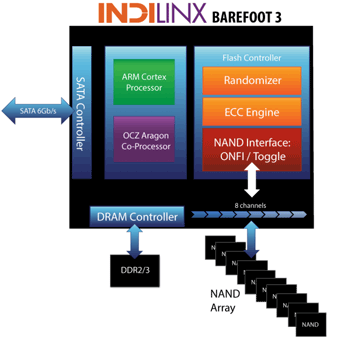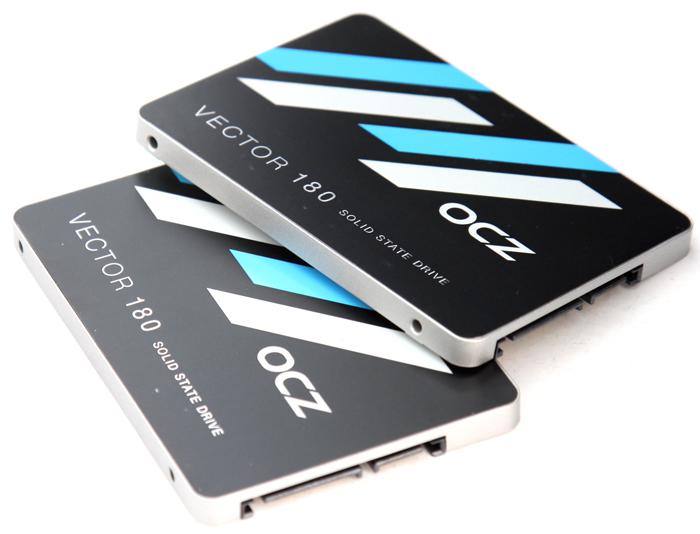Specifications & Features
Specifications & Features
The sample(s) that OCZ submitted are substantial, with volume sizes of 480 and 960GB. This series is equipped with Toshiba MLC NAND, flash memory from the A19nm node. The NAND flash used is labeled: TH58TEG8DDKB8C. This product is a notch faster though as it has been tweaked a little, but overall the previous generations are sitting roughly in the same domain performance wise. Below, an overview of the models released in respect to their specifications.
OCZ will release four models within the Vector 180 range, 120 GB, 240 GB, 480 GB and a big daddy 960GB version. Due to the architecture and memory channels used, the 120 GB edition will be a notch slower, albeit that is a very modest performance difference. This is pretty much the rule of thumb for any brand BTW. Still, a 120 GB SSD performing at 550 MB/sec read and 450 MB/sec write performance remains fast, especially if you keep the price in mind as, starting at 240GB, you are seeing 50 to 60 EURO cents per GB. Over time with volume availability you can save to shave off another 10%.
- SATA 3 - 6Gbp/s Interface
- A19nm Toshiba NAND Flash
- 7mm form factor
- 120 GB, 240 GB, 480 GB and 960 GB models
- Performance and endurance without compression/loss of usable capacity
- Power consumption IDLE 0.85 W / Active 3.70 W
- TRIM support
- 5 Year Warranty
The Barefoot 3 M10 controller
The flash memory is tied to the Indilinx (owned by OCZ Storage solutions) Barefoot 3 controller located under product code Barefoot 3 M10. This is an 8-channel NAND flash controller and the third revision from Indilinx, it comes with an all too familiar dual-core ARM architecture. The Barefoot 3 controller makes used of a pretty big memory partition for caching, that means internal DDR3 memory plastered and hammered shut onto the PCB being used as a file and data cache. The SSD has up-to 1024 MB of cache divided over two 256/512 MB ICs from Micron, but as we'll show you later on in the photo shoot, there is room for more.

Block diagram of the OCZ Barefoot 3 controller
Though still performing well, the Barefoot 3 controller is slowly getting outdated. Not so much in relation to performance, reliability of even NAND compatibility, more over for power consumption. The silicon is now a year or three of age and lacks certain low power states that the competition does offer. But we all know that OCZ is now working on their new "JetExpress controller" which should fix that. Then again in IDLE this SSD consumes merely 0.85 Watts, active however that number runs towards 3.70 Watts. Hey, that is still a third of a HDD, but a little more challenging for usage in a laptop.
And yeah, in terms of reliability the Barefoot products all have staggeringly low failure rates. Over time the failure rates are well below 1% (.1% for some SKUs) on products like the Vector 150 for example.



